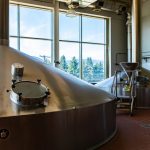Pearling, also known as pearling or dehulling, is a process in which the outer layers of barley grains are removed to obtain a product known as “pearled barley.” This treatment is often employed in brewing to enhance the quality of malt and influence various aspects of the brewing process. Below, we’ll explore the use of pearling in treating barley for brewing and its impact on the malting process.
Purpose of Pearling
The primary goal of pearling barley is to remove the outer layers of the grain, including the husk, bran, and outermost layers of the endosperm.
This process has several purposes in the context of brewing:-
- Reducing Husk Content: The husk of barley contains a substantial amount of insoluble material, including cellulose. While the husk is beneficial during mashing and lautering for filtering purposes, excessive husk content can lead to astringency and harsh flavors in the beer. Pearling helps reduce the husk content, mitigating the risk of undesirable flavors.
- Enhancing Extract Efficiency: By removing the outer layers, pearling exposes the starchy endosperm of the barley grain. This can lead to increased extract efficiency during mashing, as the enzymes responsible for converting starches to sugars have better access to the starchy interior.
- Minimizing Undesirable Compounds: Some undesirable compounds, such as tannins and polyphenols, are found in higher concentrations in the outer layers of the barley grain. Pearling helps reduce the presence of these compounds, contributing to a smoother and more palatable beer.
2. Impact on the Malting Process:
Pearling is typically performed as a pre-malting treatment, preparing the barley for subsequent malting. The malting process involves steeping, germination, and kilning, during which the barley transforms into malt. Here’s how pearling influences the malting process:
a. Steeping:
- Pearled barley absorbs water more readily than whole barley due to the removal of the outer layers. This can facilitate a more uniform and controlled steeping process, promoting even water uptake and germination.
b. Germination:
- The exposed endosperm, with reduced husk and bran layers, allows for more efficient modification during germination. Enzymes can act on the starchy endosperm, breaking down complex carbohydrates into fermentable sugars.
c. Kilning:
- Pearled barley may require different kilning parameters compared to whole barley due to changes in moisture content and enzymatic activity. The reduced husk content can affect the astringency potential of the malt, influencing the beer’s mouthfeel.
3. Types of Pearled Barley:
Depending on the extent of pearling, various types of pearled barley may be produced:
- Barley Grits: Barley grits are coarsely pearled barley with a portion of the husk and bran removed. They are often used in brewing to enhance extract efficiency while maintaining some husk content for lautering purposes.
- Barley Flakes: Barley flakes undergo more extensive pearling, resulting in flattened grains. Flakes are known for their quick and efficient hydration during mashing and are commonly used in brewing to improve mouthfeel and head retention.
4. Considerations for Brewers:
a. Adjusting the Malt Bill:
- Brewers need to adjust their malt bills when incorporating pearled barley. The modified husk content may affect lautering, and the increased extract efficiency might influence the overall balance of the recipe.
b. Customizing Flavors:
- Pearling can influence the flavor profile of the beer by altering the levels of tannins and polyphenols. Brewers can experiment with different degrees of pearling to achieve desired flavor characteristics.
c. Monitoring Lautering:
- Brewers should monitor lautering closely when using pearled barley, as the reduced husk content may impact the grain bed’s ability to filter the wort effectively. Adjustments in lautering techniques may be necessary.
d. Storage Considerations:
- Pearled barley may have altered storage requirements compared to whole barley due to changes in moisture content and susceptibility to enzymatic activity. Proper storage conditions are crucial to maintaining the quality of pearled barley.
Summary
The use of pearling in treating barley for brewing is a strategic step to influence the malting process and, consequently, the final beer. By removing the outer layers of the barley grain, brewers can enhance extract efficiency, reduce the risk of astringency, and customize the flavor profile of their brews. However, careful consideration and adjustments in the brewing process are necessary to maximize the benefits of pearled barley while maintaining the desired characteristics of the beer. Experimentation and attention to detail allow brewers to harness the potential of pearling as a tool for crafting unique and high-quality beers.


Leave a Reply